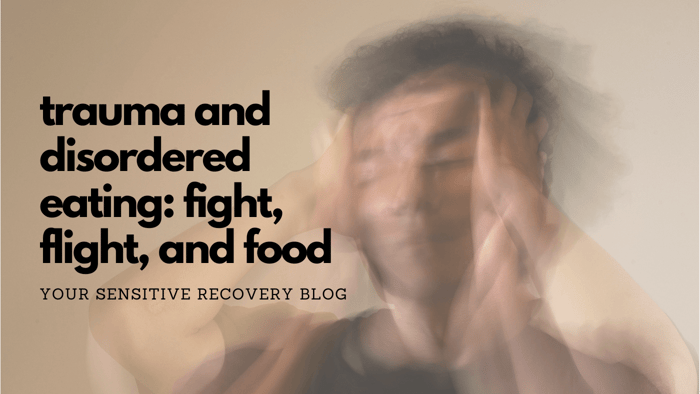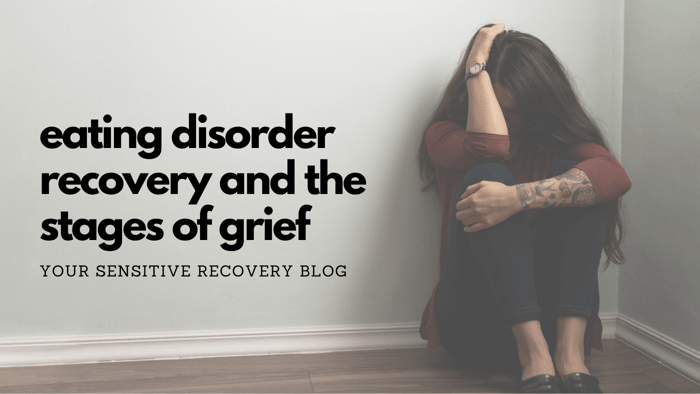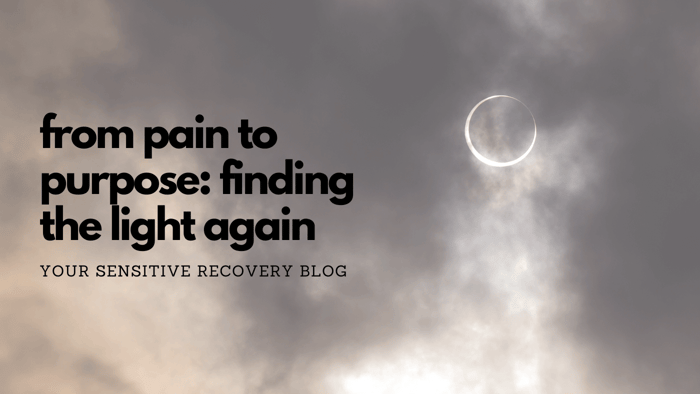Have you ever wondered why certain disordered eating behaviors feel so automatic, like your body is doing something without your conscious thought or maybe even consent? That’s not just in your head. Many food-related patterns can mirror our body’s natural trauma responses of fight, flight, freeze, and fawn.
When our nervous system senses a threat, it does whatever it takes to protect us. And sometimes, those protective responses show up in your relationship with food.
In this post, I'll be breaking down how different trauma response styles can influence disordered eating behaviors and how recognizing your own patterns can bring more clarity, compassion, and empowerment to your recovery process.
Wired for Safety: The Trauma Responses
Whenever you experience something stressful or overwhelming, or even just the threat of it, your nervous system will instantaneously identify the seemingly most effective path to safety. The path your nervous system takes is often one you don't consciously choose.
The patterns of protection that your nervous system uses are called trauma responses, and they are automated for your survival. Each one of these response styles can be observed in nature among different species, as our drive for survival is one thing we all share.
While these responses are inherently brilliant and adaptive, they can also be triggered in situations where we are not actually in danger, and their effects can linger long after the perceived threat has passed.
Here are the 4 main trauma responses you might recognize:
- Fight: This response is all about preparing you to fight off danger, take control, or push back. If your nervous system senses a threat, it might tell you to power through, get angry, or tighten your grip on things for a sense of control.
- Flight: Flight is about preparing you to flee from danger and get to safety. Whether through literally running away or through avoidance and denial, this response helps you escape from overwhelming situations as well as overwhelming sensations, thoughts, and emotions.
- Freeze: The freeze response prepares you to wait for the danger to pass. This is the equivalent of "playing dead" in the face of a predator your body suspects it cannot beat. You might feel stuck, spaced out, or disconnected from your body in this state.
- Fawn: This response encourages you to keep the peace and prevent danger, much like a less dominant animal showing deference to an alpha. You might engage in people-pleasing and ignore your own needs to avoid potential conflict and/or stay connected to others.
Most individuals have a go-to style when it comes to trauma responses, and one isn't better than the others. None of these responses means that there’s something wrong with you. Whether you tend to fight, flight, freeze, or fawn, it's simply a sign that your nervous system is doing exactly what it was designed to do: protect you.
How Trauma Responses Show Up in Eating Behaviors
Below are some examples of how our food-related behaviors can be directed by fight, flight, freeze, or fawn. It's common for individuals to engage in behaviors from multiple categories, although you may find that you have a dominant one. Note: the same behaviors can show up in more than one response category due to the different functions the behavior can serve.
Fight: attempting to dominate and regain a sense of control.
- Binge and purge episodes
- Chewing and spitting
- Using eating behaviors as a way to assert control or rebel (ex: “I'll show you” restriction)
- Compulsive exercise, regardless of pain, fatigue, or illness
- Self-punishment after eating (e.g., body-checking, negative self-talk, purging)
- Rigid food rules and rituals
Flight: attempting to escape discomfort by distracting or shifting focus.
- Excessive activity/movement (fidgeting) or exercise
- Purging, even after a moderate amount of food
- Overscheduling in an attempt to avoid eating or body awareness
- Using excessive caffeine or other methods to suppress appetite
- Food aversions or phobias (may be sensory or fear-based)
- Excessive weighing, measuring, calorie counting, etc.
Freeze: attempting to disconnect and shut down any threats.
- Unintentional restriction, difficulty connecting with hunger
- Paralyzed by food choices and often unsure of what "sounds good"
- Dissociation or numbing out during or after eating
- Low urgency when responding to hunger cues
- Mindless eating in a trance-like state (may not remember much afterward)
Fawn: attempting to maintain safety through compliance or agreeability.
- Denying hunger to appear "low maintenance"
- Forgetting to eat due to prioritizing the needs of others
- Eating in secret to avoid judgment
- Over-accommodating others’ dietary preferences or needs at the expense of your own
- Comparing your food to others and making adjustments to "fit in"
- Attempts to alter body weight or shape to meet outside expectations
Healing Trauma and Disordered Eating: A Gentle Path
When you’re navigating eating disorder recovery, your nervous system’s trauma response style can deeply influence the way you experience support, certain triggers, and recovery setbacks. If you don’t understand your response tendency, you may unknowingly work against your healing.
Which trauma response style feels most familiar to you? Are you seeing any patterns not only in your response to recovery-related stressors, but stressors related to relationships, work or school, finances, etc.?
Awareness is a powerful first step, and it helps you reframe disordered behaviors as adaptations, not flaws or proof of your brokenness.
It can feel daunting to face recovery from both disordered eating and trauma, but it is possible. When you meet yourself with compassion instead of criticism, you make space for the deep healing to occur.
Recovery doesn’t mean forcing yourself to be “normal.” It means gently getting to know your responses, honoring the pain from which they came, and learning new ways to care for yourself that feel safe and supportive.
You are worth it. 💕
✨ Josie Munroe, LMFT is a licensed therapist and owner of JosieMunroe.com and Your Sensitive Recovery. As a recovered clinician and Highly Sensitive Person, she loves supporting others on their journeys to form new, empowered relationships with food, their bodies, and their sensitivity. Join the newsletter for a weekly boost of hope and inspiration. You deserve a recovery that works for you! ✨





